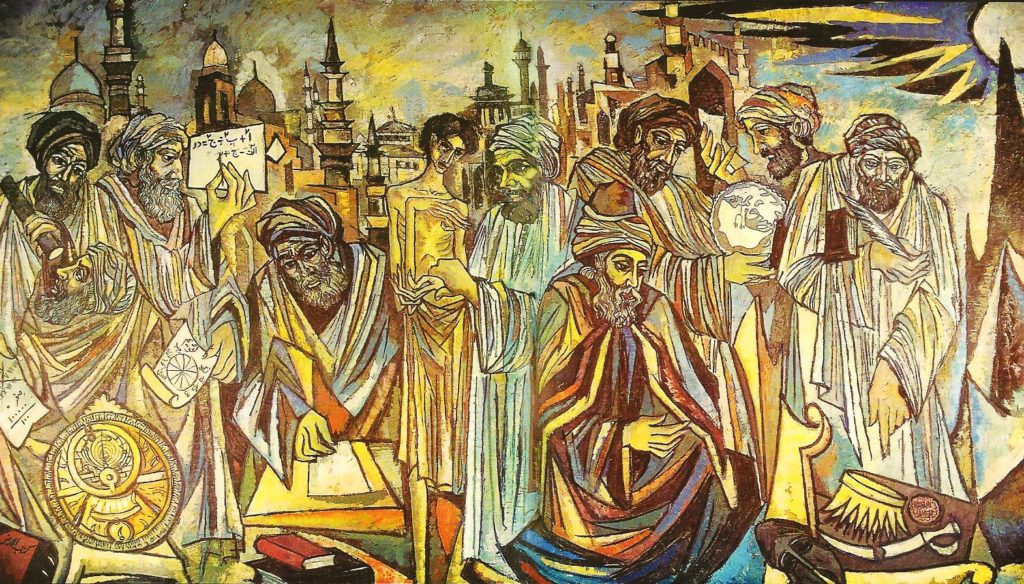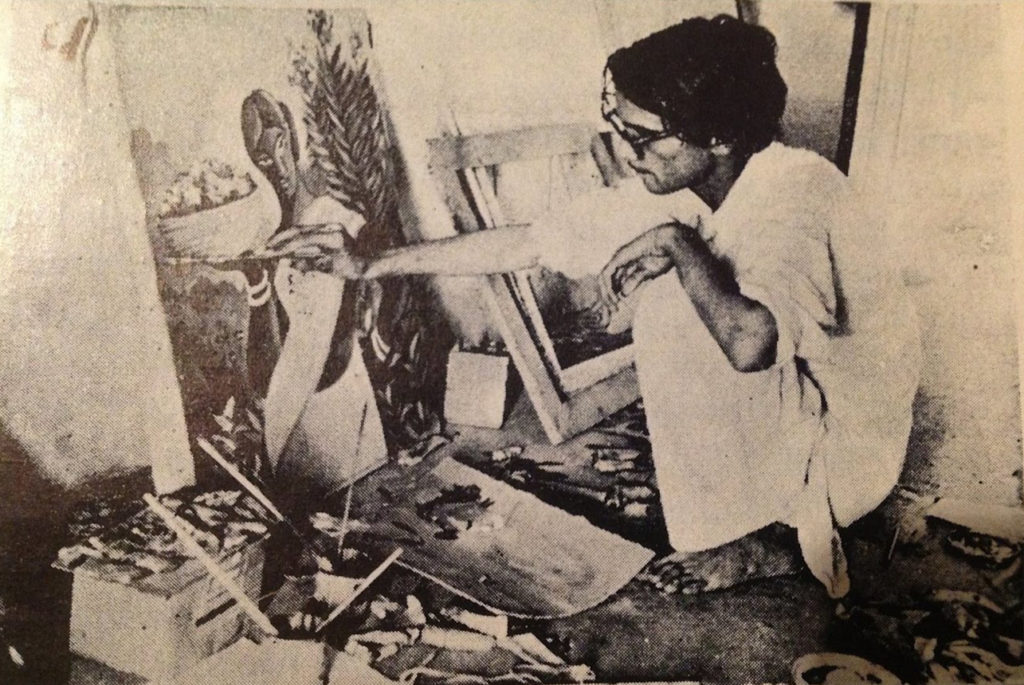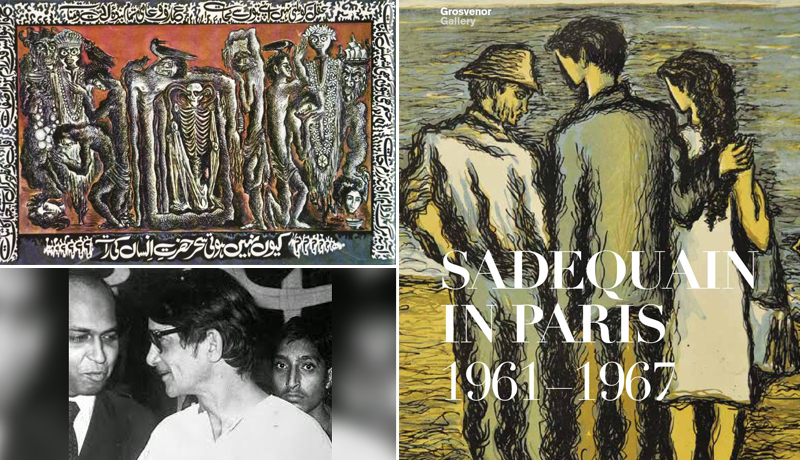On Sadequain's 90th birthday we wanted to shed light on the infamous fakheer whose works have played an extremely important role in the world of art for decades. To say that he was one of the few artists whose works transcend through all times (past and future) would be an understatement. Faiz Ahmed Faiz was believed to have said that Sadaquain was not only a painter but also a great thinker of the time. A lot of people who knew him felt that they could see a glimpse of Omar Khayam in him.

Born in Amroha, India in 1923 to a family of calligraphers, Syed Sadeqauin Ahmed Naqvi, was a man who would definitely leave a mark on all the generations to come. He spent his early years in his hometown and spent his time sketching with coal around his neighbourhood. At the time, his neighbours were as annoyed by his hobby as his family. He paid less attention towards school books and focussed only towards his love for art. He became an art teacher at a school in Amroha as well. Around the time of partition he migrated to Pakistan in the year 1948. It was after he moved that he joined the Progressive Writers and Artists Movement of Pakistan. He was a commentator, a social commentator to be precise. His earlier works highlight social evils of society that exist.
He created art not to merely sell it for monetary gains but rather to gift it to humanity. He has not only created paintings but hes greated gigantic monuments and has gifted us some of his extraordinary poetry as well. Those who were close to him, speak highly of his passion, dedication, compassion and talent.
It was Sadequain who introduced the exceptional art of mural making to Pakistan. This particular art form originated from the Renaissance and was followed in the footsteps of Leonardo Da Vinci’s “The Last Supper” and Michelangelo’s “The Creation of Adam”. Some of Sadaquain’s famous murals include the “Quest of Knowledge”, housed by Punjab University’s library, the “Saga of Labour” which is featured at Mangla Dam and his “Arz-o-Samawat” (Earth and the Heavens) which is on the ceilings of Frere Hall. The distinct feature of all his murals is that they are filled in every inch and the reason behind this detail was that Sadequain did work for his own satisfaction and perfection and not for financial gains.

M.A Haider Naqvi who happens to be his nephew and the Founder and chairman of Sadequain Memorial Trust of India shared a very interesting episode. He spoke of Sadequain’s visit to India in 1982. He was on a 15-day tourist visa. On the second day of his trip, he had a meeting with Indira Gandhi. They spent quite a while discussing politics (which he had no interest in), social issues (that he felt strongly about) and his art. By the end of his meeting with her, Indira Gandhi had extended his visit visa indefinitely and had asked him to stay as long as he wished. His visa was not city wise, he was given a nationwide visa which let him roam about India freely. This trip lasted a good 14 to 15 months where he had numerous exhibitions all over the country. His first exhibition was held at Lalit Kala Akademi which was co-hosted by M. F. Husain.
He went on to make many murals in India free of cost, we highlight this particular aspect of his because its an essential part of his personality. He never really cared about money. His murals, his creations for India was all a gift from him to show his love for his birth country.

Sadequain’s work revolved around him trying to show the vagaries of life. When asked what inspires him he went on to explain: “What inspires me is a person who has gone hungry for hours and is struggling for survival. The expression that lights his face at the end of the day when he has finally found some scraps, that is what touches me. I am a painter of the expression of reality.”
The government of Pakistan honored him with various awards, the first of these was Tamghai-e-Imtiaz in the year 1960 and first prize in the national exhibition held in Karachi. His list of national awards also included Sitar-e-Imtiaz and Pride of Performance. His work also got admiration at the international level where he also earned some famous awards for artwork which included Laureate de Paris, Australian culture award and Gold mercury award.

One interesting story is that of him receiving an award from the Biennale de Paris in 1961. His father, when Sadequain was young, did not understand his madness behind his art and so was usually not happy with him as he did not study well in school. So when the time for the Biennale de Paris came about, Sadequain sent a ticket to his father so he could come see him in the beautiful city and see what he has achieved. In the plane, his father lost Sadequain’s address and was extremely tensed. The air hostess approached him and asked him what the matter was. He explained that he was going to go visit his son but had misplaced the address and does not know the city at all. Hearing his concerns, the air hostess asked what his son’s name was, and after hearing Sadequain’s name she was in awe. She told him he had nothing to worry about and that she will personally make sure that the father and son are reunited. It’s said that she took him to Sadequain herself as she considered it to be an honor and his address was well known by all those who lived in Paris. Sadequain was a well-reknowned name all over the world by then.
Sadequain lives on through the magneficient works he created over the years and the huge impact he has had on the world of art. He had very clear views of the world at the time and he did not give in to the political pressures that were put on him at the time. He was a thinker, he was bold in what he believed strongly about and his works speak of his thoughts. There were those who did not support his boldness, his art, but he did not budge. He was not a people pleaser, he wanted to work for the betterment of the society.

